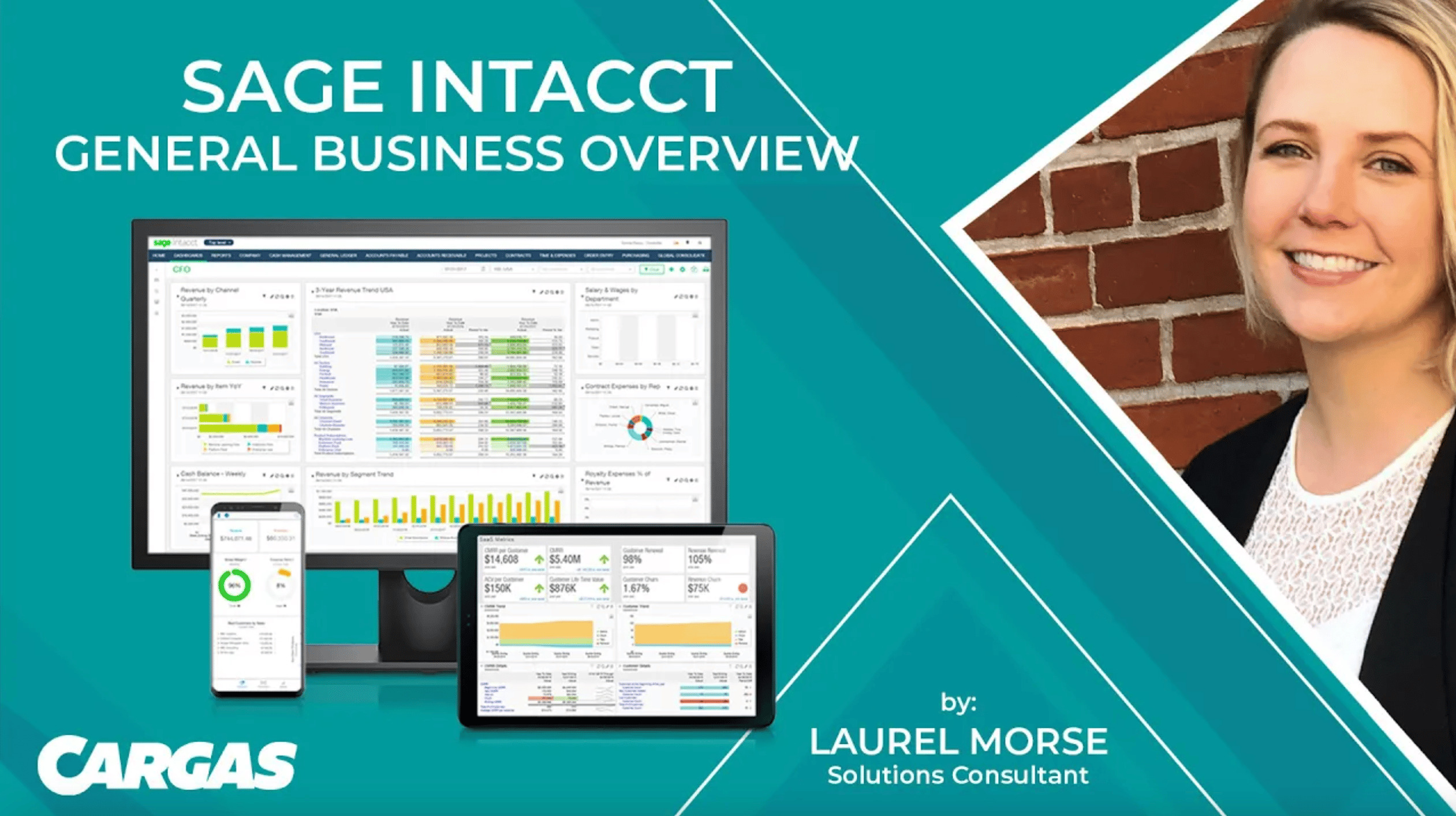ARTICLE | 5 MIN READ
The Benefits of Sage Intacct Global Consolidations
Learn how Sage Intacct’s Global Consolidations module saves time for busy businesses.

Sage Intacct cloud accounting software has features and capabilities to satisfy the most complex financial management and reporting needs. So, if your organization struggles with reconciling financials for multiple locations and entities worldwide, you’ll want to learn more about Sage Intacct’s Global Consolidations module.
Global Consolidations is a robust module for Sage Intacct that automates processes, reduces errors, and saves valuable time for companies with multi-entity and multi-currency needs.
Sage Intacct Global Consolidations at a Glance
According to Ryan Butzer, one of our expert Sage Intacct Sales Consultants at Cargas, a business may benefit from Global Consolidations if it:
- Has locations globally
- Needs currency conversions
- Requires multi-entity financial consolidations
- Must meet compliance requirements for multi-currency consolidation associated with ASC830/FAS-52
Sage Intacct’s Global Consolidations module is especially well-suited for companies with distribution or SaaS (Software as a Service) focuses. However, any organization with accounting needs that span multiple countries and involve various currencies may be an ideal candidate for the software. For global businesses, Sage Intacct’s global consolidations features automate financial consolidation activities, including currency conversions, inter-entity transactions, local tax reporting, and more.
When multiple currencies and entities are involved, Global Consolidations automatically factors in the conversion rates for all entities and currencies, distilling everything into one currency value. The module manages complex calculations and uses real-time data to offer accurate, meaningful, and up-to-date financial data.
It’s simple to set up new entities and establish configurable rules for inter-entity transactions, bank accounts, and more. The software also provides the flexibility to configure new entities with unique definitions or have them inherit your existing charts of accounts, lists, and process definitions.
Key benefits include:
- Centralization of financial information. The Global Consolidations module allows you to manage company financials in one place, regardless of geography, currency type, number of entities, or lines of business.
- Journaled consolidations. You get detailed visibility, with eliminations and currency impacts recorded as journal entries. The solution also allows you to make post-consolidation adjustments easily.
- Real-time reporting. You can view your financial statements on demand. Anytime you want to see interim summary figures, you can get them.
- Faster closings. Its automation eliminates manual work. Companies have reported they can close their books 25 to 70 percent faster. By speeding up closing procedures, it also reduces labor costs.
- Unified project tracking. Used in conjunction with Sage Intacct’s Project Accounting module, Global Consolidations enables you to track expenses and project success across multiple locations worldwide.
A Powerful Time and Cost-Saving Solution for Multi-Location, Multi-Currency Businesses
Companies dealing with just one currency will not need Global Consolidations’ capabilities. However, it’s one of the most valuable modules available for organizations with locations in more than one country.
Many companies spend immense amounts of time doing consolidation calculations manually using Excel spreadsheets. With Sage Intacct’s Global Consolidations, you get one-button access to completing consolidations.




